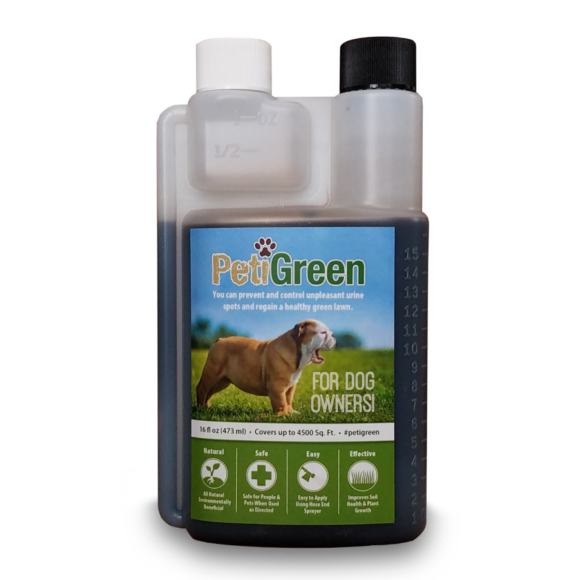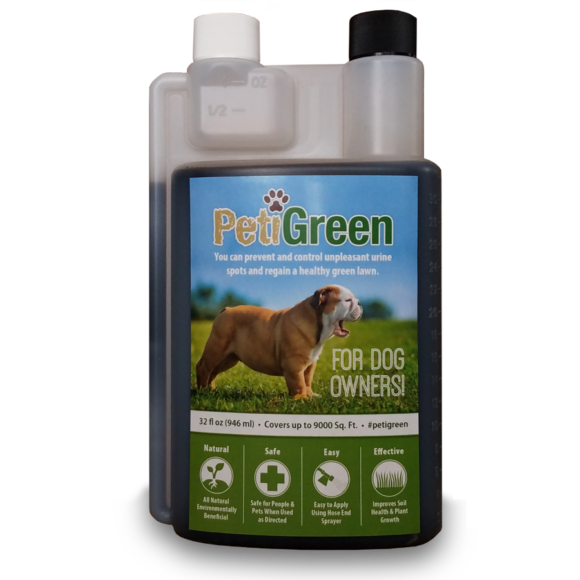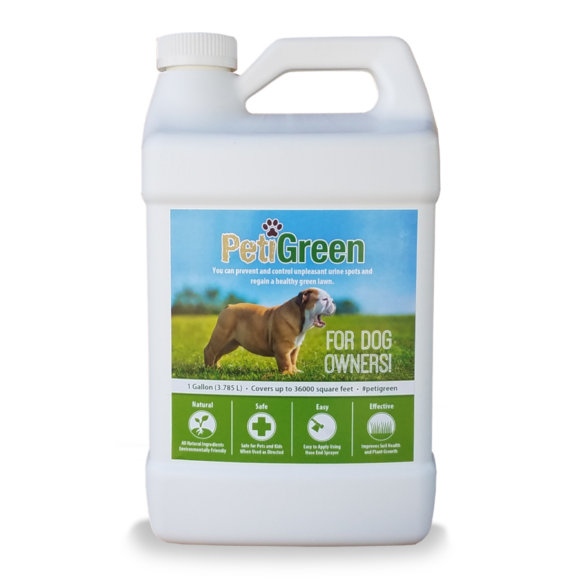Dog urine burns a lawn when the soil is unable to metabolize the nitrogen and salts in the pee. Learn how to increase biological activity in your soil that works to prevent dog urine spots in your lawn.
Dog urine can be a lawn’s worst nightmare. This is not a surprise to many dog owners who have seen their once-beautiful yards deteriorate and become marked by the tell-tale signs of urine burn. Have you ever wondered why dog urine is so toxic to your yard?
There is an analogy we use when explaining why dog urine burns a lawn. Think of a dog urine spot as evidence your lawn is overweight and has a slow metabolism. A burn spot in your lawn is the result of an excessive amount of nitrogen found in dog urine. This nitrogen has overwhelmed the soil’s ability to metabolize it into usable growth nutrients. Like an overweight person, the soil has consumed too many “calories” without the metabolism to efficiently process them into usable nutrients.
Dog urine is a type of urea nitrogen fertilizer that your dog applies to your lawn many times a day. The urea gets digested by the soil’s bacteria and changed into nitrites. The nitrates then feed the lawn. If more urea nitrogen is added to the soil than can be digested, it can be toxic to the grass and create a burn spot in the lawn. Ironically, the condition is often made worse with many commercial fertilizer applications because most of these fertilizers contain nitrogen. In essence, the urine and the fertilizers are ganging up on your lawn.
Helping your soil ‘digest’ nitrogen
To lose weight, most people agree you need to change your diet as well as exercise. Doing just one of these things is likely to be much less effective. A two-pronged approach works best for your soil as well. Most of the information we find on the Internet is focused on minimizing or diluting the amount of urine in the soil. This can help to lessen the amount of nitrogen in the soil. However, it won’t do anything to improve the metabolic activity in your soil. Unless you can prevent your dog from adding the extra “calories” to the lawn, you need to increase the soil’s beneficial microbial activity so it can metabolize the excess nitrogen.
The purpose of soil is to provide a growing environment for plants. One key role of this environment is to break down and digest complex nutrients like fertilizers, dog urine, and thatch into simpler nutrients that plants are able to consume. This digestion system is biological and will grow and expand in a favorable environment or diminish and die in an unfavorable environment.
To handle the increased nutrients added to the lawn through dog urine, the biological “metabolism” needs to be active enough to digest the amount of urine added to the soil. Healthy soil provides the perfect environment to digest dog urine.
Healthy soil equals a healthy lawn
PetiGreen is formulated to repair and improve the environment in the soil to facilitate biological growth. With the first application,PetiGreen will start to correct the adverse conditions in the soil that have restricted the biological growth. This improvement in soil activity is necessary to handle the increase in nitrogen from dog urine. The repair process will continue and accelerate with each application. Once the soil is healthy and in balance, it can efficiently metabolize nitrogen and you’ll see those urine spots start to disappear.
Just like a person who eats healthy and is physically active,your lawn will experience a number of additional benefits from healthy, active soil:
Healthy soil will improve the overall health, color and growth of your lawn.
Increased biological activity helps soften the soil damaged by salt and restructures into an open soil.
Healthy soil helps to build and deepen the roots of the lawn as well as promote better water utilization.
Biologically active soil can digest fertilizers more effectively, improving lawn growth using less fertilizer.
Healthy Soil will help neutralize soil pH levels.








